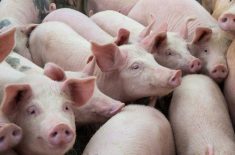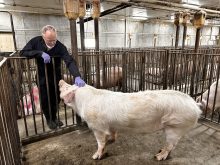On a price chart, hog prices don’t look so terrible.
But prices without costs mean nothing to a farmer, which explains why American and Canadian hog barn construction and renovations have slowed to a trickle. At the same time, nobody seems keen to forge ahead with new production.
Representatives of Iowa and Minnesota hog farmers told Manitoba producers that high costs are producing big losses and don’t justify new barns.
“There’s going to be demand for my (old) facilities for the foreseeable future,” said Aaron Juergens of the Iowa Pork Producers Association.
Read Also

Russian wheat exports start to pick up the pace
Russia has had a slow start for its 2025-26 wheat export program, but the pace is starting to pick up and that is a bearish factor for prices.
“It’s tough to get stuff built.”
In the United States, central midwestern sow spaces cost about US$3,500 each, and that is with facilities that are not compliant with California’s Proposition 12 rules that require larger per sow areas.
“You talk about seven, seven-and-a-half percent interest in the U.S. on operating capital and it takes a will, a wish, a lot of blood and humph to make it go,” said Juergens.
On the northern side of the border, new sow facilities are said to be quoted at about $5,000 per place, which is much higher than five years ago, before inflation and construction shortfalls caused prices to soar.
“There’s been very little construction happening,” said Rick Prejet, farmer and Manitoba Pork Council chair, during the organization’s annual meeting.
MPC plans to update its listing of expected construction costs soon.
“We do need to update our budgets. We’re well overdue. It’ll be scary, but they’ll be what they’ll be,” said Prejet.
Juergens said construction ground to a halt in 2020 with the pandemic. He said it’s hard to get a sense of expected costs when there are so few barns being built.
Both Juergens and Minnesota Pork Producers director John Anderson said they expect to see the industry renew its barns in the future, once either costs or prices justify new investments.
















